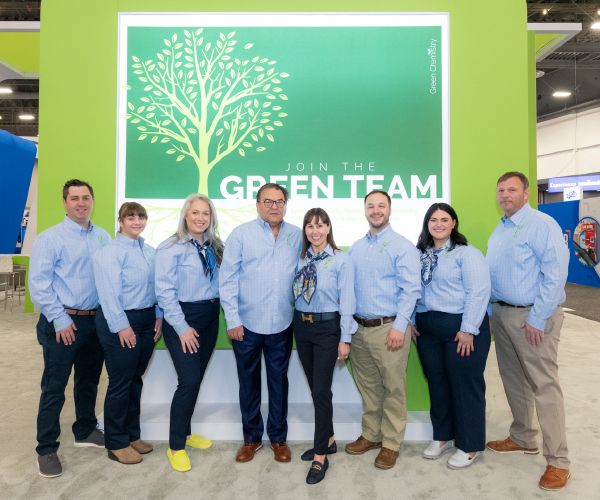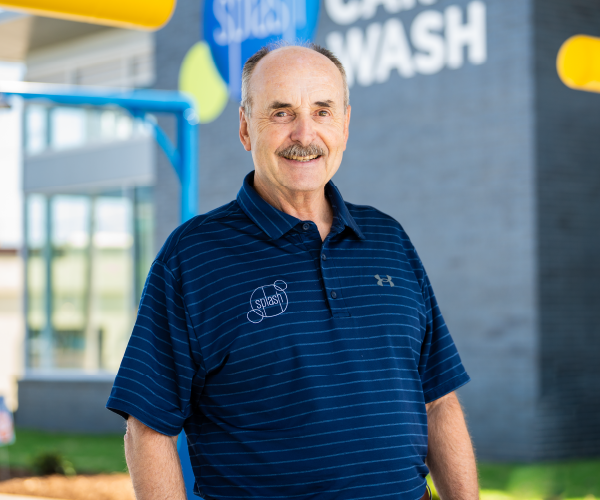
Diversify Your Talent Pool
May 19, 2022
8 minute ReadBy Nicole Nelson
 When Gleam Car Wash opened its doors to Colorado’s Denver Highlands neighborhood five years ago, owner-operator Emilie Baratta’s philosophy was to not only make it the most environmentally sustainable operation she could conceivably design and build, but also a beacon to the community with the specific inclusion of local, neurodivergent individuals in the workforce.
When Gleam Car Wash opened its doors to Colorado’s Denver Highlands neighborhood five years ago, owner-operator Emilie Baratta’s philosophy was to not only make it the most environmentally sustainable operation she could conceivably design and build, but also a beacon to the community with the specific inclusion of local, neurodivergent individuals in the workforce.
“We looked at a bunch of different ways that we could give back to the community while also strengthening the business,” Baratta said, noting the element of outreach couldn’t be just for show given the capital-intensive reality of a flex car wash in a major metropolitan area.
“Investors require returns and this is an SBA-backed loan,” Baratta said. “We’re a for-profit business first and foremost, but we wanted Gleam to be a win-win across the board so that it wouldn’t be one of those socially-conscious programs that sometimes just goes by the wayside when times get hard. We wanted this inclusion to be integral to the business model itself.”
With a lot of time and effort involved, Baratta said her extensive diversification goals have come to fruition.
“The right fit is difficult to find, just like it is difficult to find regular – ‘neurotypical’ – employees who are a particularly good fit for any business,” Baratta said. “It is particularly challenging with this group of individuals. But when you do find the right person, sometimes you get the most amazing employee and it is completely worth the time on the front end, from a recruiting and training perspective. Plus it simply transforms lives.”
Baratta beamed as she sang the praises of two employees – one with Down’s Syndrome and another on the Autism spectrum – who have worked with Gleam over the past three and a half years.
“They are some of our best employees,” Baratta said. “When they arrived at Gleam, they were both effectively nonverbal because they had had limited human interaction. Within six to 12 months, they were amazing employees. They tease the owner. They’re financially responsible – they have direct deposit. They have great pride in their jobs, they work full time. They are very communicative – some have actually trained some of our new recruits.”
From a business perspective, Baratta said this approach requires a lot of time and energy on the front end, but can really strengthen a business.
“Everybody knows that it is incredibly expensive to recruit and train new employees, so if you can reduce churn, it strengthens your bottom line,” Baratta said. “That is what a program like this can accomplish if implemented correctly and consistently.”
Deepening the Talent Pool
Affinity HR Group President Claudia St. John lauded Gleam Car Wash’s efforts, noting that hiring developmentally or physically disabled populations, as well as veteran communities, is not only gratifying, but optimal from a taxation perspective as their employment may generate a Work Opportunity Tax Credit (WOTC) of up to $9,600.
“Everybody wins,” St. John said. “You are basically being heavily subsidized to employ populations that have really needed those opportunities.”
St. John also suggested car wash employers look at marginalized populations that have historically had a hard time attaining jobs.
“Go to your local county jails and work with the transition officers there that help these folks transition back into society,” St. John said, noting ex-felons are also among targeted groups eligible for WOTC. “They want these people to have jobs and they know who is a good fit and who is not a good fit. They want everybody to be successful.”
To achieve overall success in diversified employment, St. John said owners and operators of car washes should first identify what exactly diversity actually represents in their given environment.
“If a car wash’s intention is really to hire with diversity in mind, it starts with that definition,” St. John said, noting it could mean more women, more people of color, more transgender or LGBTQ people and any diversity of religion. “Whatever that is in mind, it starts with being intentional. So how would an owner-operator like to expand the diversity of its workplace?”
Subgroupings including diversity of perspective, socioeconomic diversity and behavioral style diversity should be considered as well, St. John said.
“Regardless of which aspect of diversity a car wash is seeking, the first step is always to define it,” she said.
Building a More Inclusive Workplace
From there, St. John suggested a process of identifying two factors about potential employees: “First of all, what are their needs and what are they looking for in a workplace? And second, how will you be an employer of choice to them?”
One approach to this is by conducting a workplace strengths, weaknesses, opportunities and threats (SWOT) analysis.
“What are the weaknesses? What are the opportunities and strengths that we as an employer can create for this population and what are our weaknesses and external threats?” St. John said.
With any SWOT analysis, the goal is to maximize the strengths and opportunities and minimize the weaknesses and the threats to make a more positive work experience.
Within the realm of being intentional about diversity and inclusion, St. John emphasized the importance of gaining a better understanding of diversity population needs and how employment practices are perhaps creating those barriers.
“If you specify you have to have a Bachelor’s degree, or some form of certification, to be a supervisor and that is not a predominant experience in the population that you are looking to draw from,” St. John said, “you are setting a requirement, that by its own definition, excludes the people that you are wanting to be intentional about.”
St. John said a lot of organizations that are truly intentional about wanting to foster a diverse workplace have to go to pretty high lengths to find such populations in order to understand their needs, to create opportunities and to overcome obstacles ranging from childcare to simply having enough money to start off in a capacity that requires the purchase of a car wash uniform. She said the key to success is setting realistic expectations.
“If your car wash is in a very non-diverse area and the areas where you would be able to draw these workers from are 20 miles away, that's unrealistic,” St. John said. “You need to create opportunities where they exist. Maybe that would require getting a van service to bring workers to the car wash. Maybe that would include paying for childcare around the corner from the car wash. It is really an issue of being empathetic and understanding what the needs are and how you can overcome them.”
Attracting a Variety of Workers
Beyond creating this positive environment, St. John said employers still have to attract these desired employees.
“Once you have worked to understand who you want, take some serious marketing dollars and instead of trying to expand client bases, take a second and try to use those dollars to do very intentional marketing and advertising for the people that you want to work for you,” St. John said.
If a car wash uses a marketing firm, they should ask for a marketing strategy to get the messaging out to the populations that they are targeting for employment. Tactics may include placing advertisements on multilingual radio stations or putting billboards on buses driving through targeted neighborhoods.
Beyond message placement, car washes should take advantage of the opportunity to weave storytelling in employment marketing via viral advertising means. St. John said businesses could focus on less video footage of cars getting washed, and more of the amazing employees washing them. She also advocated for car washes to incentivize existing employees to serve as brand ambassadors and have an active role on social media, so potential candidates can see themselves in the employees the business is highlighting.
For this social media-savvy segment of the population and beyond, St. John suggested making job applications phone friendly.
“Everybody is applying for a job on their phone,” St. John said, noting that the application pool tends to be young and opts out of using a computer or may not have access to computers in the first place. “I would challenge every car wash owner or operator to get out their phone and try to fill out their own job application.”
When it comes to the job application itself, St. John advised skipping queries such as where an applicant went to high school and instead diving into items of absolute importance.
“All you need to know at the very first point is, Are you legal to work in the United States? Are you 18 years or older? And do you have any experience?” St. John said.
Beyond the prevalence of handheld devices and social media, St. John said that more traditional forms of face-to-face employment events, such as job fairs, are still highly relevant to capture a widespread audience. She also highlighted the importance of swag, including company t-shirts and hats, to exude a culture that is inclusive, as well as representative employees speaking the language that the target audience is speaking.
St. John also suggested localized gathering places as prime areas of opportunity to gain targeted employees.
“You have to look within a 25 mile radius of your workplace to identify who your potential hires are,” St. John said. “Who do you want? Where are they going instead of to you? Why are they going there? How can you tell a story and create an offering that is better for them? You need to have boots on the ground at clubs, schools, camps, vocational schools, shelters . . . you name it. Wherever they are, go find them and tell your story.
“I think that everybody knows by now that if you just simply put your job on Indeed, that’s not enough because everybody is posting their jobs on Indeed. And a lot of them are working really hard to sweeten the pot and to take workers away from you. Car wash owners need to be very mindful now that those are not the easiest jobs out there. The jobs are hard in the summer when it is hot, and hard in the winter when it is cold and wet. Car washes need to be focusing on retention and celebrating and appreciating the workers that they already have as well and strongly incentivizing them to stay and bring in their friends and family.”
Baratta, who implemented many of these hiring strategies, said she takes pride in the fact that she has been able to successfully attain strong numbers signifying diversity at Denver’s Gleam Car Wash.
“I think it would be great if more people did this,” Baratta said. “It is a lot of work, but it is actually a really good thing to do from a business perspective, because you do wind up with some truly, truly amazing employees.”








